Today’s Current Affairs: 10th September 2025 for UPSC IAS exams, State PSC exams, SSC CGL, State SSC, RRB, Railways, Banking Exam & IBPS, etc
Table of Contents
Unified Real Estate (Regulation and Development) Act, 2016 (RERA) Portal:

The Minister of Housing and Urban Affairs recently launched the Unified Real Estate (Regulation and Development) Act, 2016 (RERA) portal —rera.mohua.gov.in— at the 5th meeting of the Central Advisory Council in New Delhi.
- RERA, introduced in 2016, was designed to tackle project delays and protect homebuyers.
- Until now, each state and union territory had its own RERA website.
- The primary purpose of the Unified RERA Portal is to consolidate data from various state RERA portals into a single, integrated platform—making information such as approvals, project statuses, timelines, and developer histories easily accessible to homebuyers and regulators
- It was launched by the Ministry of Housing and Urban Affairs.
- The portal aims to create a national database of projects, enhance transparency, and share best practices across States and Union Territories.
- It will let both homebuyers and developers check the status of any project across India in one place.
- The portal is also designed to deploy artificial intelligence (AI) tools to flag potentially delayed or stalled projects.
- Key features include:
- Buyers can view project details nationwide in one place.
- Developer history, project approvals, and timelines are easily accessible.
- Uniform data makes it simpler to compare projects across states.
- Complaint filing and tracking can now be streamlined.
- A major highlight of the portal is easier access to verified information.
- Buyers can confirm whether a project has necessary approvals, track progress against timelines, and even review a developer’s compliance history.
- This would cut down the need for “endless follow-ups” and reduce complaints, making transactions more dependable.
- For developers, the portal standardises reporting requirements, making it easier to update project details and stay compliant with regulations.
United Kingdom-India Infrastructure Financing Bridge:
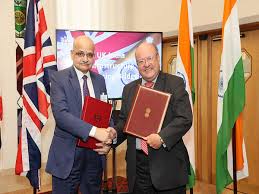
The U.K. India Infrastructure Financing Bridge (UKIIFB) recently marked its first anniversary by launching a report in the City of London.
- United Kingdom-India Infrastructure Financing Bridge (UKIIFB) is a collaborative initiative led jointly by NITI Aayog and the City of London.
- It aims to channel sustainable infrastructure investments into India, leveraging the UK’s expertise in managing and structuring large-scale projects.
- The UKIIFB, agreed as part of the UK Economic and Financial Dialogue (EFD), was operationalised with a steering committee made up of representatives from the UK government’s Treasury department, construction giants, and engineering and legal firms operating across both countries to drive forward the aim of getting mega infrastructure projects bid-ready.
- This committee will oversee the implementation of the initiative, focusing on projects such as national highways, regional rapid transport systems, and renewable energy ventures.
- UKIIFB Stakeholders will seek to jointly build a diverse investment and financing system that is long-term, stable, and sustainable with manageable risks.
- It is distinctly committed to sustainable infrastructure development, prioritizing environmentally friendly projects that are aligned with the core principles of the Sustainable Development Goals.
Evia Island:
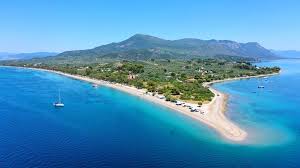
A magnitude 5.2 earthquake shook central Greece recently, with its epicenter located near Athens on Evia Island.
- Evia, or Euboea, is the second largest island in Greece, second only to Crete, and third in Europe (second only to Cyprus).
- The area of the island is a little more than 3500 sq.km.
- It is located in Central Greece, in the Aegean Sea.
- The island is separated from the Greek mainland by the Euboean strait.
- It is often referred to as a “mainland island” due to its close proximity to Athens, with many points of connection between the two.
- Evia’s dramatic geography includes alpine mountains, lush forests, coastal wetlands, hidden canyons, and sun-soaked beaches.
- The main city on Evia is Halkida.
- It acts as the administrative and commercial heart of the island and is famously known for the unique phenomenon of the tidal currents in the narrow strait of Euripus, which changes direction multiple times a day.
- Evia’s highest mountains are Dyrfi, Kandili, and Ohi.
- The climate of Evia is Mediterranean. Winters are mild but rainy, and summers are hot with plenty of sunshine.
Hilsa Fish : In News
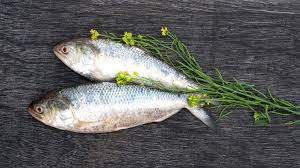
Bangladesh recently announced it has decided to export hilsa fish to India ahead of the Durga Puja festive season as a mark of “enduring Bangladesh-India friendship”.
- Hilsa Fish is a species of fish belonging to the Clupeidae family, which includes herring fish.
- It is also called Ilish and holds an exceptional position in the culinary customs and social practices of Bengal.
- It is a fish that is highly prized because of its delicate flavour, distinct taste, and silky texture.
- Scientific Name: Tenualosa ilisha
- It is found in rivers and estuaries in Bangladesh, India, Pakistan, Myanmar, and the Persian Gulf
- Hilsa fish live in both saltwater and freshwater.
- They spend most of their lives in the ocean.
- However, when it’s time to lay their eggs, they swim up into rivers. This journey is called a migration.
- They travel to rivers like the Padma River and Meghna River in Bangladesh.
- They also go to rivers in India, such as the Ganges River and Godavari River.
- Bangladesh produces around 70% of the world’s ilish, making it a subject of public pride. Ilish is also the national fish of Bangladesh.
- The Hilsa fish helps Bangladesh’s economy a lot. It makes up about 12% of all the fish caught in the country. It also adds about 1% to the country’s total GDP.
- Conservation Status: IUCN: Least Concern.
Combined Commanders’ Conference (CCC) 2025:
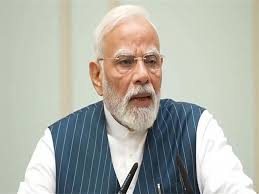
The Prime Minister will inaugurate the Combined Commanders’ Conference (CCC) 2025 in Kolkata, West Bengal.
- The CCC is the apex-level brainstorming forum of the Armed Forces, bringing together the nation’s top civil and military leadership to exchange views at the conceptual and strategic levels.
- CCC 2025 will be held in Kolkata, West Bengal, from September 15 to 17, 2025.
- The central theme for this year’s conference is “Year of Reforms – Transforming for the Future”.
- The CCC 2025 will focus on Reforms, Transformation & Change and Operational Preparedness.
- Together, these reflect the Armed Forces’ commitment to institutional reforms, deeper integration, and technological modernisation, while sustaining a high level of multi-domain operational readiness.
- The deliberations will seek to further strengthen the Armed Forces, which are agile and decisive in an increasingly complex geo-strategic landscape.
- Continuing with the tradition of inclusive engagement, the conference will feature interactive sessions with officers and personnel of various ranks from the Armed Forces, ensuring that field-level perspectives enrich the discussions at the highest level.
- The conference will also be attended by the Defence Minister, the National Security Adviser, the Minister of State for Defence, the Chief of Defence Staff, and the Defence Secretary.
Giant African Snail:
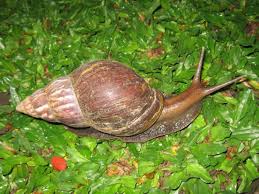
Experts warned that the Giant African Snail’s (Lissachatina fulica) presence poses serious risks to Chennai city residents.
- Giant African Snail is the common name for several large African land snail species. The most damaging of these pests is Lissachatina fulica.
- It is one of the world’s worst invasive species.
- It is known to eat more than 500 types of crops and ornamental plants.
- It is native to East Africa but it has been widely introduced to other parts of the world through the pet trade, as a food resource, and by accidental introduction.
- It thrives in warm tropical climates with mild temperatures all year round and high humidity.
- It is found in agricultural areas, coastal areas and wetlands, natural and planted forests, riparian zones, scrublands and shrublands, and the urban zones.
- It is a threat to animals and people because it can transmit parasites such as rat lungworm and other diseases.
- The recent study warned that the snail is a vector for parasitic nematodes such as Angiostrongylus cantonensis and costaricensis, which cause eosinophilic meningoencephalitis (brain infection) and abdominal angiostrongyliasis in humans.
- These infections often spread through ingestion of contaminated gastropods or their residues.
Phosphate Rock:
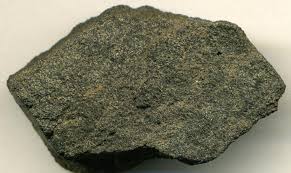
The Union Environment Ministry’s Expert Appraisal Committee (EAC) has given its nod to carry out an environment impact assessment study for Birmania Rock Phosphate mine proposed in the potential Great Indian Bustard (GIB) area in Jaisalmer, Rajasthan.
- It is the natural source of phosphorus, an element that provides nutrients to plants for their growth and development.
- It is a sedimentary rock formed millions of years ago by the accumulation of organic matter on the ocean floor.
- Its reserves are found in Africa, North America, Kazakhstan, the Middle East and Oceania.
- The world’s largest deposits are located in Morocco, which is also one of the global leaders in phosphate extraction.
- Phosphate rocks are majorly produced only from two States in India, namely Rajasthan and Madhya Pradesh.
- Rock phosphate is the key raw material for DAP and NPK fertilizers. Currently, India is 90% dependent on imports for this raw material.
- Most of the phosphate rock mined throughout the world is used to produce phosphate fertilizer.
- It is also used as animal feed supplements.
- Elemental phosphorus and phosphoric chemicals derived from phosphate rocks find application in detergents, insecticides etc.
Duchenne Muscular Dystrophy:

The Ministry of Social Justice & Empowerment, Government of India, observes World Duchenne Muscular Dystrophy Day every year on 7th September.
- It is a rare genetic disorder which is characterized by progressive muscle degeneration and weakness.
- It is caused by a genetic problem in producing dystrophin, a protein that protects muscle fibers from breaking down when exposed to enzymes.
- It was first described by the French neurologist Guillaume Benjamin Amand Duchenne in 1860.
- It is a multi-systemic condition, affecting many parts of the body, which results in deterioration of the skeletal, heart, and lung muscles.
- The dystrophin gene is found on the X-chromosome, it primarily affects males, while females are typically carriers.
- It can begin as early as age 2 or 3, first affecting the proximal muscles (those close to the core of the body) and later affecting the distal limb muscles (those close to the extremities).
- Usually, the lower external muscles are affected before the upper external muscles.
- The affected child might have difficulty jumping, running, and walking.
- Other symptoms include enlargement of the calves, a waddling gait, and lumbar lordosis (an inward curve of the spine).
- Presently available treatments are gene therapy, exon skipping, stop codon read-through and gene repair.
Apatani Tribe:
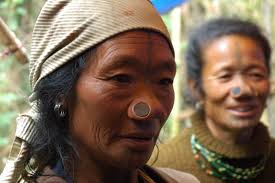
The Apatani tribal women of Ziro Valley in Arunachal Pradesh are known for their facial tattoos and wooden nose plugs; banned in the 1970s, but still carried by only older women.
- The Apatani, or Tanw, also known by Apa and Apa Tani, are a tribal group of people living in the Ziro valley in Arunachal Pradesh.
- They speak a local language called Tani and worship the sun and the moon.
- They have major festivals like Dree, Myoko, Yapung and Murung.
- Dree is celebrated with prayers for a bumper harvest and prosperity of all humankind and Myoka celebrates friendship similar to modern friendship day.
- Apatani women are known for their distinctive facial tattoos and nose plugs — a tradition that began as a means of protection against abduction.
- The nose plugs, called Yaping Hullo, are made from wood found in the forest.
- The tattoos, known as Tippei, are done by the elder women when an Apatani girl is about 10 years old.
- They have been practising integrated rice-fish farming in their mountain terraces of Arunachal Pradesh since the 1960s.
- These tribal people principally use three rice varieties: Emeo, Pyape and Mypia.
21st Annual Global Investor Conference 2025:
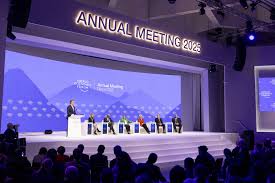
The Union Minister of Commerce and Industry addressed the 21st Annual Global Investor Conference 2025, emphasizing India’s strong economic performance and its vision of becoming a developed nation by 2047 under Viksit Bharat.
Key Highlights of 21st Annual Global Investor Conference 2025:
- India’s economy grew by 7.8% in the Q1 of FY 2025, the highest since 2020.
- Private investment went up by 66%, FDI increased by 14%, and inflation (CPI) was the lowest in many years.
- The Manufacturing PMI reached a 17.5-year high, showing strong growth in production.
- The government is using infrastructure as a growth driver to boost demand.
- Focus is also on making drones, semiconductors, and CRGO steel in India to cut imports and build local industries.
- The GST 2.0 has made taxation simpler and is expected to increase demand.
- Along with this, lower corporate and personal taxes and RBI’s easy monetary policy have boosted business activity, while keeping inflation at just 1.5%.
- The banking sector is performing at its best in years, giving confidence to depositors and borrowers.
- Also, millions of new demat accounts are being opened each month, showing growing participation in stock markets and more domestic investment.
- India has signed trade agreements with Mauritius, UAE, and Australia, and is negotiating with the EFTA bloc, EU, and UK.
- The government is promoting renewable energy and energy-efficient products like LED bulbs and 5-star appliances.
- It is also stressing Zero Defect, Zero Effect (ZED) manufacturing, which means making high-quality goods that do not harm the environment.
Hockey Asia Cup 2025:

India defeated Korea 4-1 in the final of the Men’s Hockey Asia Cup 2025 in Rajgir, Bihar, clinching their fourth title.
- With this victory, India also sealed direct qualification for the 2026 FIH Men’s Hockey World Cup in Belgium and the Netherlands.
- Hockey Asia Cup 2025 is a quadrennial international men’s hockey tournament organised by the Asian Hockey Federation.
- Considered the most prestigious continental hockey championship in Asia, offering a World Cup berth to the winner.
- Held in Rajgir, Bihar, from 29th August to 7th September 2025.
- India hosted the tournament for the first time in Bihar, showcasing the state’s growing role in global sports.
- Mascot: Chaand, a fierce tiger draped in a red cape and crowned with a magician’s hat.
- Symbolises skill, courage, agility, and pride, inspired by Bihar’s Valmiki Tiger Reserve.
- Winner (2025 Edition): India lifted the trophy by defeating defending champions Korea 4-1 in the final.
- This marked India’s 4th Asia Cup title, joining Pakistan (3 titles) and Korea (5 titles) among the top winners.
Cotton Cultivation in India:
Apart from extending the 11% import duty waiver on cotton, the Union government has raised the MSP for cotton for the 2025–26 season and expanded procurement efforts to support farmers facing price pressures and stabilize the textile industry. The move addresses both the challenges of rising imports and the need to safeguard farmer welfare amid a 15-year low in domestic cotton production. Cotton, popularly called “White Gold”, is India’s most important commercial crop, contributing about one-fourth of global output. Nearly two-thirds (67%) of the area is rain-fed, making cultivation highly dependent on monsoons, while only a third (33%) is irrigated. Cotton cultivation in India dates back to the Indus Valley Civilization, with textiles famed worldwide for their quality and craftsmanship, but under colonial rule India was reduced to a raw cotton supplier for British mills. India is the second-largest producer and consumer of cotton in the world, after China. Cotton contributes 24% of global output; India has the largest acreage but ranks 36th in productivity.
Indian Healthcare League:
The Indian Healthcare League (IHL), launched by cricketer Cheteshwar Pujara, brings together doctors from leading hospitals to play cricket and raise cancer awareness. It is awellness and awareness initiative modeled on the IPL format, featuring doctors from AIIMS, Fortis, Max, and other leading hospitals. There are Six regional franchises (Delhi, Gujarat, Rajasthan, Maharashtra, Haryana, UP) participate in cricket matches.
Aim is to Spread cancer awareness across India, to Promote mental well-being and fitness among healthcare professionals, to Build camaraderie, teamwork, and balance between healthcare duties and personal wellness.
India and Israel sign Bilateral Investment Agreement (BIA):
India and Israel signed a Bilateral Investment Agreement (BIA) in New Delhi, witnessed by Finance Ministers of India and Bezalel Smotrich. India and Israel sign Bilateral Investment Agreement (BIA) is a landmark investment protection and promotion treaty between India and Israel. Provides a minimum standard of treatment and a framework for transparent, secure, and fair investment flows. Establishes a neutral dispute resolution mechanism through arbitration to protect investors.
Balance of Payments:
India has emerged as the world’s fastest-growing major economy, recording an average annual GDP growth of 8.2% from 2021 to 2024, outpacing countries like Vietnam, China, and the United States. Despite strong growth, India faces low net foreign capital inflows, reflecting a gap between GDP expansion and investor sentiment in its Balance of Payments.The BoP serves as a crucial economic indicator, detailing all financial transactions between India and the rest of the world. This comprehensive ledger tracks the inflow and outflow of money where inflows are marked positive and outflows negative, reflecting the country’s economic interactions globally. It measures the relative demand for the rupee against foreign currencies, crucially influencing exchange rates and economic stability.
Protected Areas:
A recent study highlights the importance of Protected areas (PAs) in balancing conservation with community livelihoods.A protected area in India is a designated region focused on conserving biodiversity and protecting wildlife from human interference. India has a network of over 1,000 Protected Areas, including 107 National Parks, covering approximately 5.32% of the country’s total geographical area. These areas are categorized into different types, each with varying levels of protection and regulation.
Types of Protected Areas:
National Parks
Wildlife Sanctuaries
Conservation Reserves
Community Reserves
World Meteorological Organization (WMO) has projected that the La Niña:
The World Meteorological Organization (WMO) has projected that the La Niña weather phenomenon may return between September and November 2025.La Niña is a natural climate phenomenon that occurs when the surface waters of the central and eastern Pacific Ocean become unusually cold due to stronger-than-normal trade winds pushing warm water towards the Western Pacific (near Asia and Australia). It is opposite to El Niño, which is characterized by unusually warm sea surface temperatures in the same region.La Niña boosts southwest monsoon rainfall, benefiting Kharif crops and replenishing rivers, lakes, and groundwater. However, excessive or uneven rain can cause flooding and waterlogging in low-lying regions like Assam and Bihar. It also often brings colder-than-normal winters to northern states such as Jammu & Kashmir and Himachal Pradesh.
Two-Factor Authentication (2FA):
The rising vulnerability of passwords has led to the adoption of Two-Factor Authentication (2FA) worldwide. Popular apps like Google Authenticator now use TOTP-based codes that refresh every 30 seconds to enhance digital security.It is a security mechanism that requires users to verify identity using two different factors something they know (password) and something they have (phone/authenticator app). Developed by Concept of multi-factor authentication emerged in the 1980s in computer science security research. TOTP standard (Time-based One-Time Password) was developed by IETF (Internet Engineering Task Force) in 2011 for global interoperability. Objective is to strengthen authentication, prevent account breaches, and ensure data security by adding a second verification layer beyond traditional passwords.
CP Radhakrishnan Elected as India’s 15th Vice President:
CP Radhakrishnan, the former Tamil Nadu BJP president and Maharashtra Governor, was elected as the 15th Vice President of India, defeating opposition candidate B Sudershan Reddy, a senior advocate and former Supreme Court judge. The election witnessed a high turnout of 98.3%, showcasing the unity and participation of parliamentarians.Radhakrishnan secured 452 first preference votes, while Justice Reddy received 300 votes. Fifteen votes were declared invalid. Out of 781 eligible MPs, 767 cast their votes, marking an impressive 98.20% turnout. Thirteen MPs abstained, including members from the Biju Janata Dal, Bharat Rashtra Samithi, Shiromani Akali Dal, and one independent
Abhimanyu Mishra, the 16-year-old American chess prodigy, has made history by defeating World Champion D Gukesh at the FIDE Grand Swiss 2025:
Abhimanyu Mishra, a 16-year-old chess prodigy from the United States, has taken the global chess community by storm. Already celebrated as the youngest Grandmaster in history, he recently etched his name in the record books again by defeating reigning World Champion D Gukesh at the FIDE Grand Swiss 2025. This victory not only showcases his immense talent but also highlights his extraordinary journey, marked by early achievements and relentless dedication.
François Bayrou Ousted as French Prime Minister After Confidence Vote Defeat:
France has been plunged into fresh political turmoil after Prime Minister François Bayrou lost a parliamentary confidence vote on 8 September 2025. With just 194 MPs supporting him and 364 voting against, Bayrou’s resignation marks the collapse of Emmanuel Macron’s fragile minority government, making this the second PM to fall in less than a year.




